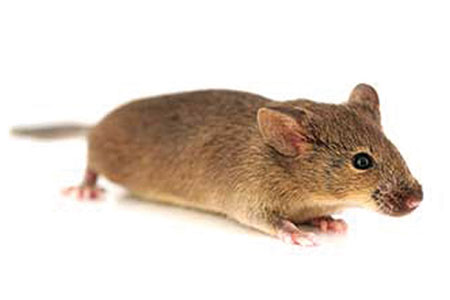 In the spirit of Russell and Burch's 3Rs, scientists are developing new tools and methodologies to reduce the use of animal models wherever possible. A very good example is the rasH2™ mouse model, which was developed as an alternative to the traditional, two-year carcinogenicity testing of compounds for mutagenic and non-mutagenic chemically- induced tumor formation.
In the spirit of Russell and Burch's 3Rs, scientists are developing new tools and methodologies to reduce the use of animal models wherever possible. A very good example is the rasH2™ mouse model, which was developed as an alternative to the traditional, two-year carcinogenicity testing of compounds for mutagenic and non-mutagenic chemically- induced tumor formation.
Transgenic Mice as an Ethical Alternative
The rasH2™ mouse was developed in the laboratory of Tatsuji Nomura of the Central Institute for Experimental Animals (CIEA) in Kawaski, Japan. rasH2™ mice carry the human c-Ha-ras oncogene, in addition to the endogenous murine Ha-ras oncogene. The presence of the human c-Ha-ras gene makes hemizygous rasH2™ mice highly susceptible to tumor development when exposed to compounds that cause cancer in humans. This supports both shorter, more effective trials and the use of fewer animals in carcinogenicity studies, thus advancing our moral obligation to reduce the suffering incurred as an unfortunate neccessity of vital preclinical safety testing.– Dr. Madhav Paranjpe, Director of Pathology at BioReliance
rasH2™ mice have been approved by The International Council for Harmonisation of Technical Requirements for Pharmaceuticals for Human Use (ICH) and the FDA for use in short-term carcinogenicity testing with in-life portion of only six months — reducing the testing timeline by 75%. rasH2™ mice also demonstrate an extremely low incidence of spontaneous tumors, with no indication of pre-neoplastic cell stages or tumors until the age of six months.
They are also proven to provide much more rapid onset and a higher incidence of more malignant tumors after being treated with mutagenic or non-mutagenic carcinogens. A typical rasH2™ mouse study utilizes 25 / sex / group versus the traditional 50 — 60 / sex / group in a 2-year study.
The rasH2™ Mouse and the 3Rs
Researchers designing their carcinogenicity testing studies with an eye on the 3Rs can satisfy two of its ethical requirements by substituting transgenic rasH2™ mice for two-year studies in traditional animal models:- Reduction — Based on the FDA approved rasH2™ mice study size of five groups (four dosage, one vehicle) of 25 / sex / group versus the traditional 50 — 60 / sex / group, the number of animals required for carcinogenicity drug safety testing has been reduced by 250 — 300 animals per study. This is a >50% reduction of the number of animals used. The latest information available indicates that over 75% of all carcinogenicity protocols submitted to the FDA include the use of rasH2™ mice, with a meaningful impact on the moral calculus of animal model research.
- Refinement — The use of the rasH2™ mouse model considerably reduces the number of mice that are euthanized due to senescence-related morbidity, which is the inevitable fate of a relatively high proportion of study animals near the end of two-year studies. It can also be expected that the number of repeat studies, due to inconclusive evidence related to false positives as a result of spontaneous tumors, is considerably reduced. Unfortunately, there is no FDA-approved
- Replacement for live animal models in carcinogenicity safety testing. Further refinement in the use of the rasH2™ mouse model continues. Dr. Madhav G. Paranjpe, et al. has published several articles proposing refinements and reductions in group number and dosages.
 In "Regulatory Forum Opinion Piece: Retrospective Evaluation of Doses in the twenty-six-week Tg.rasH2 Mice Carcinogenicity Studies: Recommendation to Eliminate High Doses at Maximum Tolerated Dose (MTD) in Future Studies3," the data suggest the maximum tolerated dose levels can be reduced by as much as 50%. This is a very good example of a refinement that can reduce pain and/or distress on an animal.
In "Regulatory Forum Opinion Piece: Retrospective Evaluation of Doses in the twenty-six-week Tg.rasH2 Mice Carcinogenicity Studies: Recommendation to Eliminate High Doses at Maximum Tolerated Dose (MTD) in Future Studies3," the data suggest the maximum tolerated dose levels can be reduced by as much as 50%. This is a very good example of a refinement that can reduce pain and/or distress on an animal. Even more recently, Dr. Paranjpe, et al. published an article in the International Journal of Toxicology4 making a sound argument for eliminating the high-dose group in the twenty-six-week carcinogenicity study, thus reducing the number of animals used by fifty.















.jpg)

.jpg)
.jpg)
.jpg)
.jpg)





.jpg)


.jpg)
.jpg)

.jpg)


.jpg)





.jpg)

.jpg)






